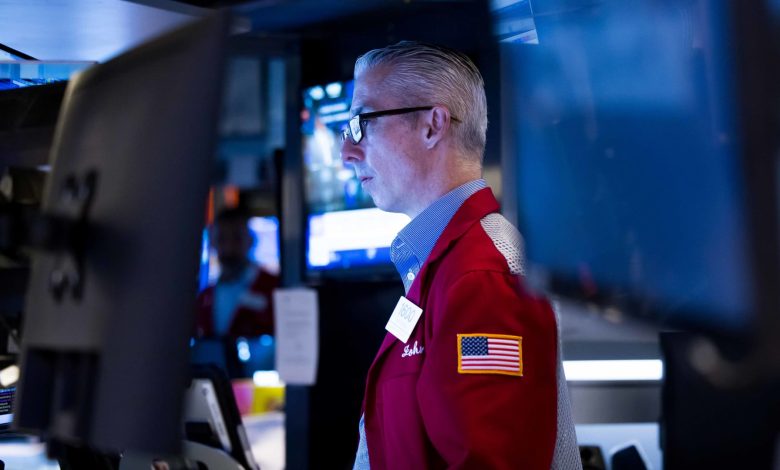U.S. stocks hit record highs, but the economic outlook is no clearer

Traders work at the New York Stock Exchange on June 18, 2025.
NYSE
U.S. stocks have strongly rebounded after a rough start to the year, even as the outlook for the world’s largest economy and its interest rates remains as uncertain as ever.
Economic modeling is “very difficult” right now because “things are changing constantly,” Atlanta Fed President Raphael Bostic told CNBC’s “Squawk Box Europe” on Monday, pointing to Canada’s recent walk-back on its digital services tax.
Market participants are also closely-watching the latest progress of U.S. President Donald Trump’s “big, beautiful bill,” which cleared a key Senate hurdle over the weekend.
From an inflation perspective, that means focusing on the expectations of businesses and consumers, along with the actions they are taking in response, Bostic continued.
“The story there is that we are really starting to hear clear signs that they’re expecting to raise prices, but how high and when that will happen is still quite unknown,” he said.
More businesses are reporting that they may not reach a final strategy on tariffs until 2026, so their impact on growth and price rises “could be a much more extended period than I think many expect,” Bostic added.
The latest Fed “dot plot,” a map of members’ expectations for rates, shows the wide range of different outlooks among officials for the economy, which Bostic said “really does speak to the uncertainty that’s out there.”

Fed Chair Jerome Powell last week stressed the need to hold monetary policy until the impact of tariffs on prices clarifies, but markets subsequently pinned their expectations on a lower Fed Funds rate range. Data from CME Group’s FedWatch tool shows around a 50% probability of three quarter-point rate cuts by the end of the year, along with a 10% probability of a greater trim to a range of 3.25%-3.5% from the current 4.25%-4.5%.
Gilles Moëc, group chief economist at AXA Investment Managers, on Monday said that the new interest rate expectations were a reaction to the latest round of Trump’s attacks on Powell. This again raised the prospect of the U.S. president naming Powell’s successor in the near future in a bid to undermine his authority.
Trump has sharply criticized the Fed for holding interest rates, and his pick would be expected to be supportive of rate reductions, even if this were opposed by the majority of voting members.
“Naming the next [Fed] President well ahead of the end of Powell’s term – materialising the much talked-about “shadow Fed” scenario – could be the harbinger of lasting volatility” and turn foreign investors further away from U.S. assets, Moëc said.
Stocks buoyed
The S&P 500 closed at an all-time high on Friday, coming back from early-April lows when it was down nearly 18% in the year to date. The index has logged big swings amid the White House’s ongoing tariff story, the latest chapter of which introduced a framework trade agreement between the U.S. and China that helped boost market sentiment last week.
The U.S. trade deal with the U.K. meanwhile went into force on Monday, reducing tariffs on British cars and aerospace parts, but keeping a baseline duty of 10% in place on most goods.
The two countries have yet to finalize a deal on steel imports — while broader U.S. steel tariff policy is keeping prices elevated stateside and depressed elsewhere.

The White House remains locked in negotiations with numerous key trading partners, including Canada, the European Union, Taiwan, Japan and India.
“Markets at the moment are I think taking a very naive view of what’s happening on the trade front,” Bob Parker, senior advisor at the International Capital Markets Association, told CNBC’s “Squawk Box Europe” on Monday.
“We could easily be having this discussion at the end of the year or potentially going in to 2026, as we all know carrying out trade agreements is very complicated and lengthy,” Parker said. “And as we saw over the weekend with Canada, there is a serious risk of trade negotiations failing.”
He added that, with the European Union in particular, even if the July 9 deadline to reach an agreement is extended, several sticking points could see an elevated level of tariffs stay in place.



